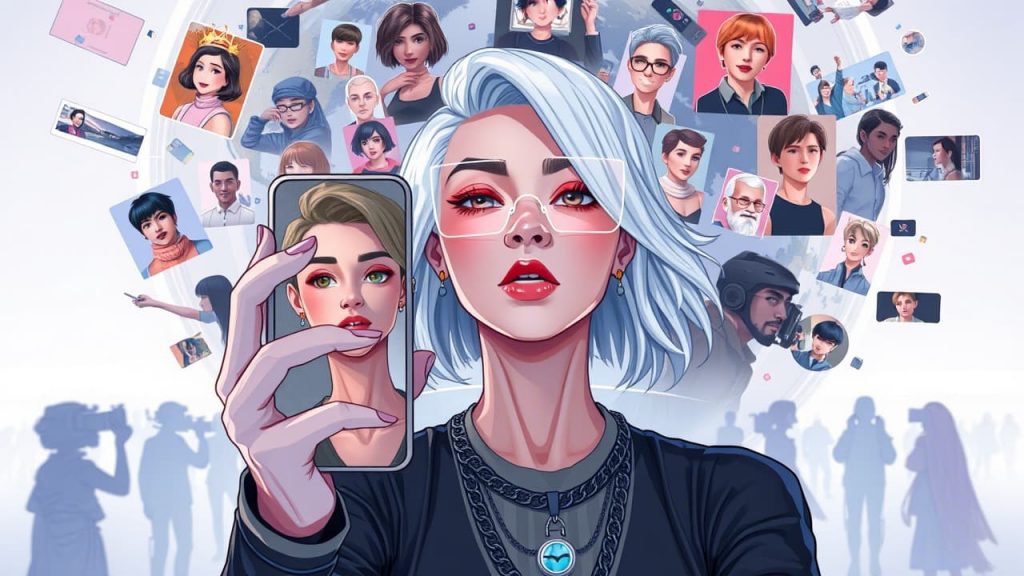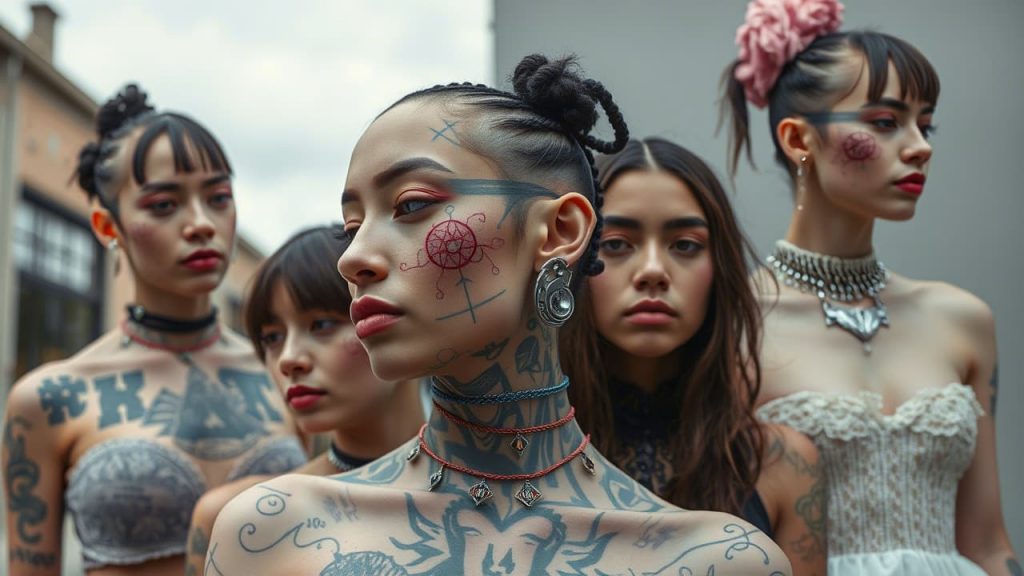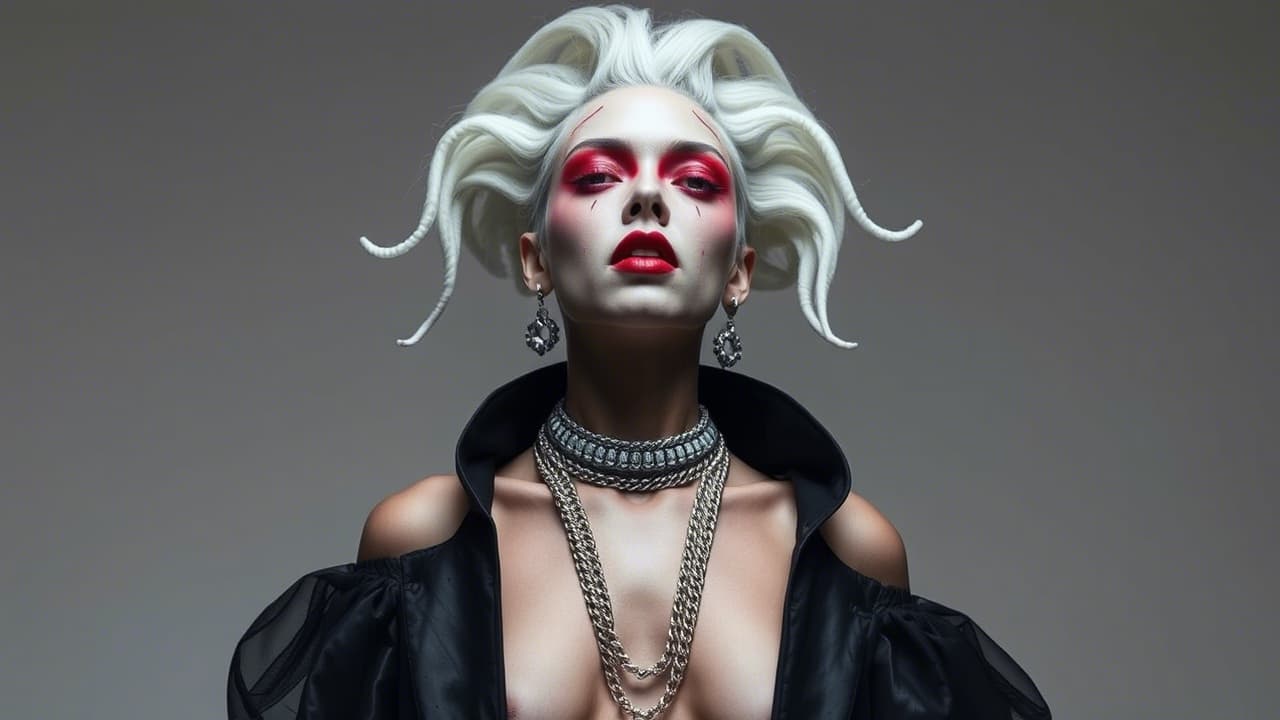Few artists challenge the boundaries between body, technology, and identity like Orlan. Her work, which spans performance, plastic surgery, artificial intelligence, and digital art, has long provoked questions about beauty, gender, transformation, and control. Through her use of the body as both medium and message, Orlan continues to influence creators across disciplines—from contemporary art to fashion, from tech to textiles.
In an era where identity is fluid and hybridization is a norm, Orlan’s practice resonates deeply. Her confrontational use of the self, refusal to conform, and ongoing reinvention speak to younger generations navigating their own digital and physical identities. This article explores how Orlan’s legacy is expanding beyond traditional art spaces and inspiring makers to blend digital culture with craft in deeply personal and political ways.
Reclaiming the Body as a Site of Expression
From her early photography and performance pieces to her infamous "Reincarnation of Saint-Orlan" surgery performances, Orlan has used her body as a living canvas. She transformed her face using cosmetic surgery not for beauty, but to embody historical icons of feminine power, questioning standardized ideals and societal pressures.
This reclamation of the body as an expressive tool challenges the passive role often assigned to women in both art and media. It repositions the female body as a site of authorship rather than objectification—a theme now explored widely on TikTok, in VR avatars, and even in textile design.
Textiles, Embroidery, and the Politics of Soft Power
While Orlan's work is rooted in high-tech media, its influence is now visible in the resurgence of traditionally "feminine" crafts like embroidery, knitting, and textile-based art. Artists and hobbyists alike are using these slow, tactile methods to process and present radical ideas. The body becomes stitched, patched, or symbolically reconstructed.
How digital influence meets traditional technique can be found on the Dimension official website, a manufacturer of intricate embroidery, fabric design, and cross-stitch kits. While not overtly political, their work reflects a growing movement of using handcraft as a tool for mindfulness, empowerment, and visual storytelling.
For Orlan fans, this connection between embroidery and bodily transformation is striking. Both involve modification, repetition, attention to detail, and personal investment. Both carry the potential for disruption, especially when combined with contemporary themes like body image, autonomy, or identity.
Self-Design in the Age of Digital Hybrids
Orlan's practice predicted many of today’s technological and aesthetic realities. Digital filters, face-altering apps, and avatar-based identities echo her performances from decades ago. In a sense, we all now perform versions of Orlan’s body-modification-as-communication strategy every time we alter a selfie or curate a persona online.

This democratization of self-representation has led to new forms of visual literacy. Craft communities online are embracing this hybridity too—combining analog practices with digital platforms like Instagram, Pinterest, and Etsy. Many creators even develop custom embroidery or cross-stitch pieces based on digital self-portraits, online aesthetics, or personal symbology.
Orlan’s Influence on DIY and Maker Culture
The rise of the DIY movement and maker culture has further amplified Orlan’s relevance. Her unapologetic manipulation of her own image aligns with the ethos of many independent artists and crafters who seek to reclaim authorship of their identities, wardrobes, and aesthetics.
This is evident in the growing number of zines, patches, and wearable art that engage with feminist themes and subvert norms. In this way, Orlan's legacy lives on not just in galleries but in bedrooms, workshops, and social feeds.
Stitching the Cyborg: Materializing the Post-Human
Orlan was one of the first artists to explore the cyborg not as a dystopian symbol, but as an opportunity for self-design and freedom from traditional humanist constraints. She blurred the line between natural and artificial, self and machine.
In textile art, this translates to wearable tech, responsive materials, and data-driven designs. Artists are now exploring how clothing and stitched objects can respond to the body’s temperature, movement, or emotional state. This fuses Orlan's early explorations of the cyborg with current advances in smart textiles and e-textiles.
Imagine an embroidery piece that changes color based on your pulse—a poetic fusion of flesh and tech. Or consider augmented reality overlays that animate your stitched work when viewed through an app. These fusions are no longer theoretical; they are increasingly part of experimental craft and design curricula worldwide.
Craft as Resistance and Ritual
One of the most powerful aspects of Orlan’s work is how it invites ritual. Each surgery, performance, or transformation followed a precise logic, a choreographed rhythm. This ritualistic structure parallels how many people approach textile arts: as a meditative, empowering, and sometimes subversive act.
Stitching political messages, reworking garments, and coding identity into fabrics are all ways modern creators continue Orlan’s legacy of using personal practice for social commentary. The needle becomes a tool of resistance, and the thread a narrative line.
Orlan for a New Generation
In a world grappling with digital saturation, AI-generated content, and virtual disconnection, Orlan’s approach offers an antidote: radical, embodied presence. Her work reminds us that to be human is to be self-defined, in flux, and creatively empowered.

From teen TikTokers to fiber artists, people are returning to the body and the handmade as places of authenticity and resistance. Orlan's spirit is present in every pierced ear, stitched scar, personalized jacket, or digitally altered self-portrait that declares: I made this version of me.
Conclusion: A Thread That Connects
Orlan has never been afraid to challenge, provoke, or transform. Her legacy is not limited to museums but lives in the hands of those who make—with needles, code, scissors, or cameras. She is stitched into the fabric of contemporary culture, one thread at a time.
For those discovering her for the first time, or returning with fresh eyes, the invitation remains the same: use what you have to tell your story. Whether it’s a brush or a needle, a filter or a garment, what matters is the courage to create.

